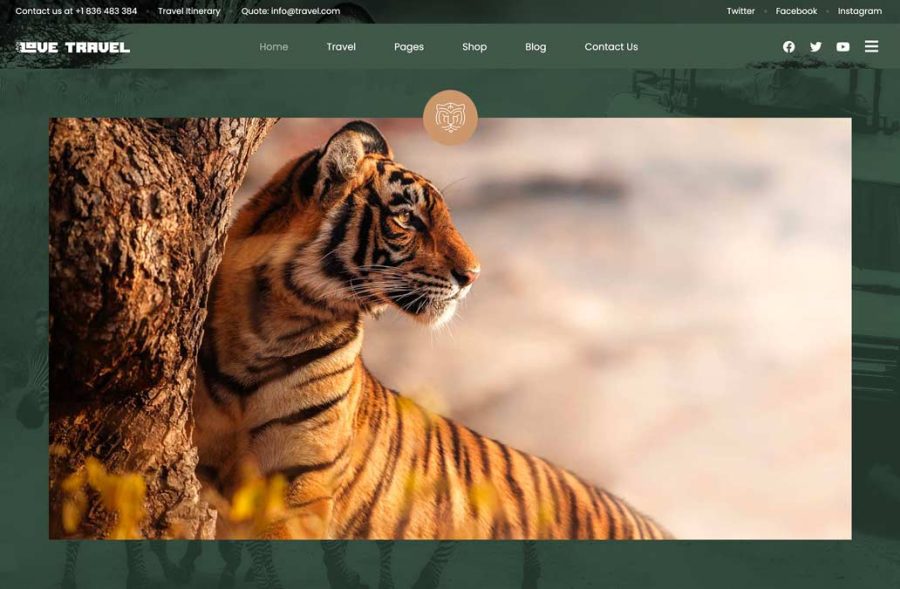India is home to a remarkable array of national parks and wildlife sanctuaries that embody the country’s incredible biodiversity and offer a gateway to Indian eco-tourism. These protected areas, designated by the government, are vital for the conservation of wildlife and the preservation of natural ecosystems.Indian national parks serve as critical habitats for a diverse range of flora and fauna. They provide a sanctuary for endangered and rare species, making significant contributions to wildlife conservation in India. These parks are located in various regions, including biodiversity hotspots, allowing for the preservation of India’s unique ecological heritage and contributing to global conservation efforts.The history of Indian national parks is intriguing. The first national park, now known as Jim Corbett National Park, was established in 1936. Since then, legislation such as the Wildlife Protection Act 1972 and projects like Project Tiger have been implemented to strengthen the protection of wildlife and their habitats. The creation of these parks demonstrates India’s commitment to safeguarding its natural resources.Presently, there are 106 national parks in India, covering approximately 1.35% of the country’s geographical area, totaling 44,402.95 km2. These national parks vary in size, featuring diverse ecosystems, such as forests, grasslands, wetlands, and coastal areas. They are spread across different states and union territories, enabling the preservation and conservation of each region’s natural heritage.India’s national parks are internationally renowned for their stunning landscapes and abundant wildlife. Parks like Jim Corbett National Park, Ranthambore National Park, and Gir National Park attract tourists from around the globe. Visitors can experience thrilling safaris and witness majestic animals, like the Asiatic lions in Gir National Park. These parks exemplify the wonders of Indian wildlife reserves.India’s commitment to wildlife conservation is evident through various organizations and initiatives. The Ministry of Environment and Forests oversees conservation policies, while institutions like the Wildlife Institute of India and the Tiger Conservation Authority actively contribute towards the protection and preservation of wildlife. Collaborations with global organizations like CITES, IUCN, and WWF further strengthen India’s efforts in promoting conservation on a global scale.Indian national parks harbor several endangered species and are designated as part of the protected area network, which includes biosphere reserves, wildlife sanctuaries, and conservation reserves. These protected areas ensure the long-term sustainability of wildlife populations and contribute to the overall conservation of biodiversity.Indian national parks not only conserve wildlife but also provide opportunities for eco-tourism and sustainable development. Visitors can explore the breathtaking landscapes, observe wildlife in their natural habitats, and engage in activities that promote conservation and awareness. Many national parks have adopted community-based conservation models, empowering local communities and ensuring the sustainable development of both natural and human resources.However, Indian national parks face various challenges, including encroachment, poaching, habitat destruction, and the effects of climate change. Effective management strategies, stricter enforcement of conservation laws, and public participation are essential for overcoming these obstacles and securing the future of Indian national parks.Indian national parks are invaluable treasures, offering an exceptional blend of biodiversity and natural beauty. By exploring and supporting these parks, visitors can contribute directly to wildlife conservation and experience the wonders of India’s natural heritage.
These national parks and protected areas serve as living laboratories for conservation research and education. They pave the way for sustainable practices, promote awareness about endangered species, and foster a deeper connection between humans and the natural world. By safeguarding these habitats and species, India is committed to preserving its natural heritage for generations to come.
The above examples demonstrate the successful integration of conservation and sustainable development in wildlife tourism. By supporting these community-driven initiatives, visitors can contribute to the preservation of Indian national parks and the well-being of local communities.
Jump To
ToggleImportance of Indian National Parks
Indian national parks play a crucial role in wildlife conservation and the preservation of biodiversity. These parks serve as protected habitats for numerous endangered and rare species of animals and plants. Many of these parks are located in biodiversity hotspots, which are areas with high levels of biological diversity. By preserving these areas, India is able to maintain its unique ecological heritage and contribute to global conservation efforts.History and Legislation
The establishment of national parks in India has a rich history. The first national park in India, now known as Jim Corbett National Park, was established in 1936. This marked the beginning of a significant conservation movement in the country, aimed at protecting and preserving its diverse wildlife and natural ecosystems.One of the key milestones in wildlife protection in India was the enactment of the Wildlife Protection Act in 1972. This landmark legislation provided a legal framework for the conservation and management of wildlife, making it illegal to hunt, capture, or trade endangered species. The Wildlife Protection Act aimed at safeguarding the country’s biodiversity and ensuring the sustainable use of natural resources.In 1973, the Indian government launched Project Tiger, an ambitious initiative under the Wildlife Protection Act. The primary objective of Project Tiger was to protect the endangered Bengal tiger and its habitats. The project focused on establishing tiger reserves, implementing conservation strategies, and combating poaching and habitat destruction.With the combined efforts of conservation organizations, local communities, and government agencies, Project Tiger has played a vital role in the recovery and conservation of the Bengal tiger population in India.To further strengthen wildlife protection and address emerging conservation challenges, the government introduced the Wildlife Protection Act of 2002. This legislation aimed to update and enhance the provisions of the previous act, addressing the evolving needs of wildlife conservation in India. The Wildlife Protection Act of 2002 included provisions for the protection of specific species, the regulation of wildlife trade, and the establishment of conservation reserves.These legislative measures reflect India’s commitment to wildlife conservation and its recognition of the importance of preserving its natural heritage for future generations.
Number and Size of Indian National Parks
India is home to an extensive network of national parks that encompass a wide range of ecosystems, showcasing the country’s remarkable biodiversity. Currently, there are 106 national parks spread across the nation, collectively covering an area of approximately 44,402.95 km2. This accounts for approximately 1.35% of India’s total geographical area.The national parks in India vary in size, with each park offering its unique natural wonders. Among them, the Hemis National Park stands out as the largest, covering an impressive area of 4,400 km2. This park, located in the Ladakh region of Jammu and Kashmir, is renowned for its breathtaking landscapes and diverse wildlife.These national parks span an array of ecosystems, including dense forests, sprawling grasslands, tranquil wetlands, and stunning coastal regions. Each ecosystem provides a vital habitat for a myriad of plant and animal species, contributing to the overall conservation efforts in India.State-wise Distribution of National Parks
National parks in India are distributed across various states and union territories, showcasing the country’s rich natural heritage and diverse flora and fauna. Each state has its own unique national parks, offering visitors a chance to explore the distinct ecosystems and wildlife found in different regions of India.Here are some examples of national parks in different states:- Karnataka: Bandipur National Park, Nagarhole National Park
- Assam: Kaziranga National Park, Manas National Park
- Madhya Pradesh: Kanha National Park, Bandhavgarh National Park
- Uttarakhand: Jim Corbett National Park, Valley of Flowers National Park
- Rajasthan: Ranthambore National Park, Sariska Tiger Reserve
Notable Indian National Parks
India is renowned for its famous national parks that attract tourists from around the world. Some notable national parks include:- Jim Corbett National Park: Located in Uttarakhand, this national park is India’s oldest national park and is named after the legendary hunter and conservationist, Jim Corbett. It is known for its rich wildlife, including Bengal tigers, Asian elephants, and a variety of bird species.
- Ranthambore National Park: Situated in Rajasthan, Ranthambore National Park is one of the most popular Indian safari destinations. It is famous for its population of Royal Bengal tigers and offers thrilling opportunities to spot these majestic creatures in their natural habitat.
- Gir National Park: Located in Gujarat, Gir National Park is the only national park in India that is home to Asiatic lions. It plays a crucial role in the conservation of this endangered species and offers visitors a unique chance to see these magnificent lions up close.
“The national parks of India provide a remarkable opportunity to experience the country’s diverse wildlife and immerse oneself in the beauty of nature.”
Conservation Efforts and Organizations
India is dedicated to wildlife conservation efforts and has several organizations and initiatives in place to protect and preserve its rich biodiversity. These organizations work tirelessly to ensure the survival of wildlife species and the maintenance of their natural habitats. Some of the prominent wildlife conservation organizations in India include:Ministry of Environment and Forests
The Ministry of Environment and Forests plays a vital role in overseeing and implementing conservation policies and programs in India. It formulates and enforces the necessary laws and regulations to protect wildlife and their habitats.Wildlife Institute of India
The Wildlife Institute of India (WII) is an esteemed research organization that focuses on wildlife conservation and management. It conducts scientific studies on various species and ecosystems, providing valuable insights for conservation planning and management.Tiger Conservation Authority
The Tiger Conservation Authority is dedicated to protecting and conserving the endangered tiger population in India. It works closely with national parks and reserves to ensure the preservation of tiger habitats and the implementation of anti-poaching measures.International Collaborations
India collaborates with international organizations to promote global wildlife conservation efforts. These include:- CITES (Convention on International Trade in Endangered Species of Wild Fauna and Flora): CITES regulates international trade in endangered species to prevent their exploitation and protect their populations.
- IUCN (International Union for Conservation of Nature): IUCN is a global organization that assesses the conservation status of species and supports conservation initiatives worldwide.
- WWF (World Wide Fund for Nature): WWF collaborates with India and other countries to conserve nature and reduce the impacts of human activities on the environment.
Endangered Species and Protected Areas
Indian national parks serve as crucial habitats for several endangered species, playing a vital role in their conservation. Among these species are the majestic Bengal tiger, the iconic Indian rhinoceros, the regal Asiatic lion, and the enchanting Gangetic dolphin. These national parks provide a safe haven for these endangered animals, enabling them to thrive and sustain their populations.The national parks in India are part of a comprehensive network of protected areas, encompassing biosphere reserves, wildlife sanctuaries, and conservation reserves. These designated protected areas serve as strongholds for endangered species and contribute to the overall conservation of biodiversity. The Indian government has established these protected areas to ensure the long-term sustainability of wildlife populations and to safeguard their habitats.Through the effective management and conservation efforts within these protected areas, India strives to protect and preserve the rich wildlife heritage of the nation. These initiatives involve rigorous monitoring, anti-poaching measures, and habitat restoration projects that aim to mitigate threats to endangered species and their habitats.Endangered Species in Indian National Parks
| Endangered Species | National Parks |
|---|---|
| Bengal Tiger | Jim Corbett National Park Ranthambore National Park Bandipur National Park Kanha National Park |
| Indian Rhinoceros | Kaziranga National Park Manas National Park Pobitora Wildlife Sanctuary |
| Asiatic Lion | Gir National Park |
| Gangetic Dolphin | Sundarbans National Park Chambal Wildlife Sanctuary |
Eco-Tourism and Sustainable Development
Indian national parks offer exceptional opportunities for wildlife tourism in India, allowing visitors to explore stunning landscapes and observe wildlife in their natural habitats. This form of Indian eco-tourism promotes conservation and awareness, highlighting the importance of protecting the country’s rich biodiversity.Many national parks in India have adopted community-based conservation models, fostering a symbiotic relationship between wildlife conservation and local communities. These models actively involve communities in conservation efforts and enable them to benefit from responsible tourism practices.This approach ensures the sustainable development of both natural and human resources. By actively engaging with local communities, visitors not only contribute to the conservation of Indian national parks but also support the livelihoods of those who rely on these protected areas for their sustenance.Through their involvement in community reserves, local residents play an essential role in protecting and preserving the flora and fauna in their surrounding areas. They actively participate in conservation efforts, such as wildlife monitoring, habitat restoration, and educating visitors about the importance of wildlife conservation.“The future of wildlife conservation and sustainable development lies in the hands of the local communities. By empowering them and involving them actively in conservation efforts, we can ensure the long-term protection of our national parks and the preservation of our natural heritage.”– Environmentalist, Dr. Sahil KumarFurthermore, Indian eco-tourism initiatives in national parks encourage responsible travel practices, such as minimizing the environmental footprint, respecting wildlife habitats, and supporting local economies. These initiatives strive to strike a balance between promoting tourism and protecting the fragile ecosystems within the national parks.The table below showcases some of the popular Indian national parks that have successfully implemented community-based conservation models:
| National Park | State | Community Conservation Model |
|---|---|---|
| Kaziranga National Park | Assam | Kaziranga Conservation Model: Involves local communities in wildlife protection and sustainable livelihood initiatives. |
| Periyar National Park | Kerala | Periyar Conservation Model: Engages local communities in patrolling, ecotourism, and sustainable farming practices. |
| Sundarbans National Park | West Bengal | Sundarbans Tiger Reserve Joint Management System: Collaborates with local communities for mangrove conservation and tiger protection. |
Challenges and Future of Indian National Parks
As valuable havens for biodiversity, Indian national parks face numerous challenges that threaten their ecosystems. From encroachment and poaching to habitat destruction and the impacts of climate change, these environmental issues require urgent attention and comprehensive management strategies.The Indian natural history and forestry sectors must work collaboratively to address these challenges. Strict enforcement of conservation laws is crucial to tackling issues like encroachment and poaching. Simultaneously, public awareness and participation should be promoted to garner support for wildlife conservation efforts.The future of Indian national parks depends on the ability to navigate these challenges effectively. It requires sustainable development practices, research, and conservation initiatives. A multi-faceted approach that includes active involvement from local communities, governmental bodies, and organizations is essential in ensuring the long-term sustainability of wildlife and their habitats.Meeting the Challenges:
To safeguard the future of Indian national parks, the following steps are imperative:- Promote public awareness: Educate communities about the significance of environmental conservation and how they can contribute to protecting national parks.
- Strengthen enforcement: Bolster the enforcement of conservation laws to combat illegal activities such as poaching and encroachment.
- Encourage sustainable forestry practices: Implement responsible forestry practices that prioritize conservation and minimize the negative impact on ecosystems.
- Foster research and innovation: Invest in scientific research to better understand the challenges faced by Indian national parks and develop innovative solutions.
- Collaborate with international partners: Engage in global partnerships to leverage expertise and resources in addressing environmental challenges.
Conclusion
India is home to some of the best national parks and top wildlife reserves in the world. These protected areas are not only a haven for diverse wildlife species but also offer incredible experiences for travelers and wildlife enthusiasts. The country’s commitment to conservation and sustainable tourism practices ensures the preservation of these national parks for future generations.By exploring and supporting Indian national parks, visitors have the opportunity to contribute to wildlife conservation and witness the wonders of India’s natural heritage. From the majestic Bengal tigers of Ranthambore National Park to the iconic rhinoceroses of Kaziranga National Park, each national park showcases unique ecosystems and rare species.As India continues to address environmental challenges and work towards the long-term sustainability of its national parks, it also promotes responsible eco-tourism. Travelers can engage in activities that raise awareness about conservation and support local communities. Together, we can protect and appreciate the biodiversity of India’s national parks and ensure their preservation for generations to come.FAQ
What are Indian National Parks?
Indian National Parks are protected areas designated by the government for the conservation of wildlife and the preservation of natural ecosystems in India.
How many national parks are there in India?
Currently, there are 106 national parks in India.
What is the size of Indian national parks?
The size of Indian national parks varies, with the largest being Hemis National Park covering an area of 4,400 km2.
Which states in India have national parks?
National parks are distributed across various states and union territories in India. Each state has its own unique national parks that showcase the diverse flora and fauna of the region.
What are some notable Indian national parks?
Some notable Indian national parks include Jim Corbett National Park, Ranthambore National Park, and Gir National Park.
What conservation efforts are in place for Indian national parks?
India has several organizations and initiatives in place for wildlife conservation, including the Ministry of Environment and Forests, the Wildlife Institute of India, and the Tiger Conservation Authority.
Which endangered species are found in Indian national parks?
Indian national parks harbor several endangered species, such as the Bengal tiger, Indian rhinoceros, Asiatic lion, and Gangetic dolphin.
How do Indian national parks contribute to eco-tourism and sustainable development?
Indian national parks offer exceptional opportunities for eco-tourism and sustainable development through activities that promote conservation and awareness, as well as community-based conservation models.
What are some challenges faced by Indian national parks?
Indian national parks face challenges such as encroachment, poaching, habitat destruction, and the impacts of climate change.
What is the future of Indian national parks?
The future of Indian national parks lies in their ability to address challenges and ensure the long-term sustainability of wildlife and their habitats through research, conservation, and sustainable development.
Recent Posts
Archives
Categories
Customized Trip Form
Author

Sanjay Nair is a multi-award-winning wildlife photographer, conservation storyteller, and co-founder of Safari Lab. With over 15 years of fieldwork and a Nature in Focus award under his belt, Sanjay’s photographs and stories have been published in global outlets such as The Times & The Guardian.
View all posts


























